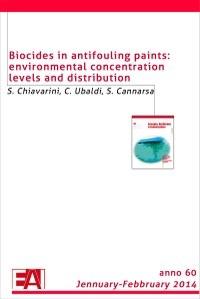
Biocides in antifouling paints: environmental concentration levels and distribution
DOI: 10.12910/EAI2014-45
Salvatore Chiavarini, Carla Ubaldi, Sigfrido Cannarsa
Antifouling (AF) paints prevent the settlement, adhesion and growth of organisms on a painted surface by the action of biocides, which are the active ingredients. Many chemicals were and are used as biocides, which have very different physico-chemical properties and therefore differing environmental effects. Copper and organotin compounds have raised concern worldwide: extensive research exists to understand their bioavailability and toxicity. For longstanding biocides, for example Irgarol 1051 and Diuron, there is a large amount of environmental data allowing the assessment of their impact. For other biocides such as dichlofluanid, SeaNine 211 or zinc/copper pyrithione, fate and effects are clear, but only few monitoring studies have been performed
Salvatore Chiavarini, Carla Ubaldi - ENEA, Technical Unit for Environmental Characterization, Prevention, and Recovery
Sigfrido Cannarsa - ENEA, Technical Unit for Marine Environment and Sustainable Development – Santa Teresa Research Centre

